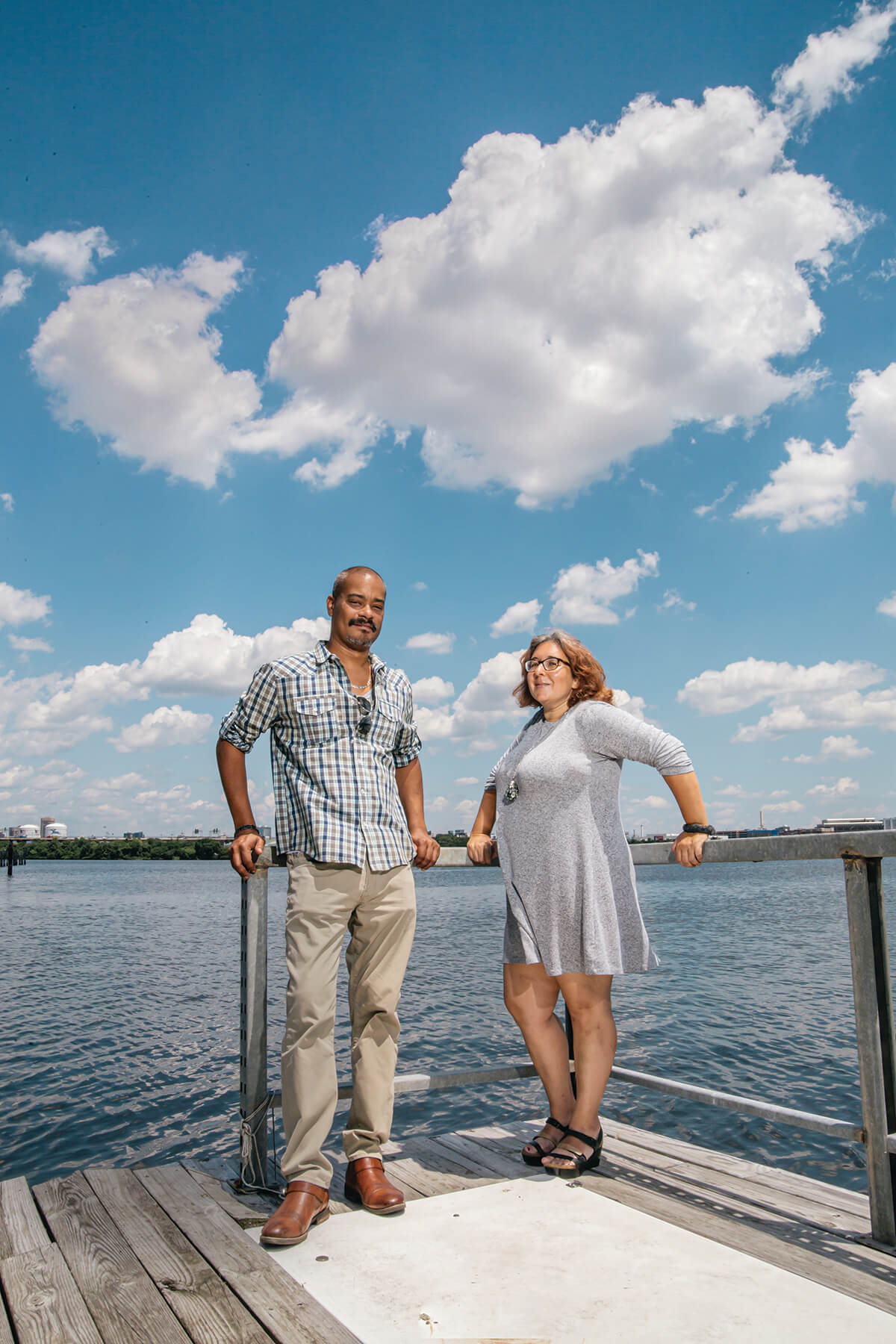GameChangers
GameChangers: Donzell Brown Jr. and Rona Kobell
We catch up with the co-founders of The Environmental Justice Journalism Initiative.

At the end of a long, weathered dock at the Middle Branch Marina in Cherry Hill sits the future home of the Environmental Justice Journalism Initiative. For years, during a weekly get-together with friends, its co-founders discussed the lack of diversity in their respective fields—Rona Kobell is a former journalist for the Sun and Bay Journal; Donzell Brown Jr. has a background in politics, community leadership, and environmental policy.
How, they wondered, could they share their connections and resources to get to the heart of this issue? Set into motion after the death of George Floyd, they launched EJJI in January 2021, with a goal of creating an online platform for Black and Brown youth to share their own environmental stories, report on those that directly impact their neighborhoods, and gain skillsets—from editing and multimedia to even scientific methods through the group’s waterfront headquarters—for a variety of career paths. On a summer visit, one intern was testing water quality for local oysters.
Tell me about the significance of this location.
RK: You can really see all of Baltimore from this one place. A lot of the city has become severed from the water one way or another, be it by highways or development. It’s very hard to get access, unless you’re extremely wealthy, and we’re hoping this place can get the community involved and better connect us to the nature and maritime history of Baltimore.
How do you see the intersection between journalism and environmental justice here?
RK: To have this site to train young journalists about the stories of Baltimore is really special, because you’re really able to see this panoramic view of both the city’s promise and its problematic past. I think there are a lot of stories to be told just in this marina. When we think about seafood, we tend to write off the city’s largely Black fishing community. There are guys here who have been crabbing for decades and they learned how from their dads or their moms.
How did you meet?
DB: We have a group of friends who met pretty much every Friday. Politicians, professionals, scientists, journalists, community leaders. A lot of time, we were sitting around a table complaining about issues in Baltimore and across the state—about diversity and science and journalism and the lack of diversity in reporting on environmental justice. As you said, many environmental stories have been done about fishermen with their weathered white faces. But those stories impact these communities just as much, if not more.
Partnering with students through local schools and other environmental organizations like the National Aquarium and the Institute of Marine and Environmental Technology (IMET), the concept has evolved beyond just being a journalism platform. How would you describe your goal today?
RK: We probably weren’t thinking big enough at the beginning. We don’t just do journalism. We’re not trying to be a news organization. We’re unapologetically an environmental justice organization. We do have a point of view. We want better things for these communities that have been marginalized. We want to help people find their voices and tell their own stories, as opposed to how traditional journalism outfits work, where they come from the top down.
DB: Journalism will always be at the heart of EJJI, but [now] we’re approaching it more like a think tank…We’re trying to create a community and a platform for a group of underserved people where they can share the work that they are doing, as well as a support system.
With the help of EJJI’s board, you plan to share your own respective connections and resources with these students. How have you experienced a lack of diversity in your careers?
DB: In many instances, I have been the only one in the room who looks like me. That’s often difficult. I empathize with these students because I know they have a long bright career ahead of them and I know that room is going to be less and less diverse as they grow up.
RK: It took me a long time to figure out in my own reporting that I was excluding people. As a Chesapeake Bay reporter, I covered oysters, crabs, watermen. My stories were mostly about white people. But over time, I’ve seen that things like climate change and sea-level rise have disproportionately affected Black and Brown communities, I wasn’t there to write that story and I should’ve been…These communities deserve sustainable coverage about these issues. And I realized that my better purpose is to not do it all myself, but to teach people the skills, which will hopefully lead to a richer story.